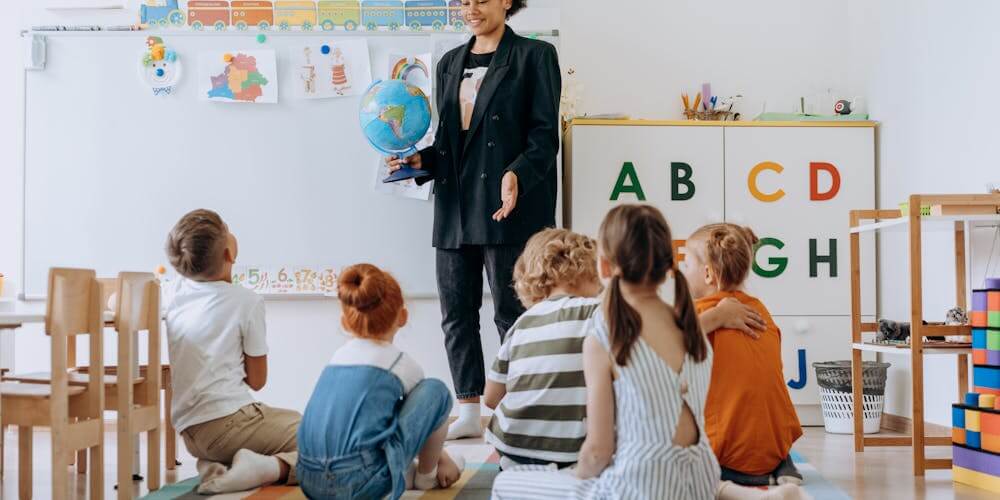
What Are 5 Components of a Good Early Learning Environment?
Explore the 5 essential components of a good early learning environment that foster child development and academic success. From thoughtfully designed physical spaces to effective teaching methods, discover how these key elements work together to create an optimal setting where young learners can thrive. Learn how to implement these proven strategies to build a foundation for lifelong learning.

How to Design an Effective Physical Learning Environment for Early Education?
Children’s interactions with their surroundings are significantly influenced by the physical features of a learning environment. An intentional and thoughtful arrangement fosters exploration, creativity, and comfort. While creating accessible and engaging learning resources, each different stage of development and formation makes for a good learning environment.
A well-designed classroom encourages interaction, exploration, and independence:
- Open spaces, natural light, and defined activity zones like reading nooks or play areas create an engaging and supportive atmosphere that caters to diverse learning styles.
- Learning centers foster cognitive, social-emotional, and physical growth. Materials like magnifying glasses or art supplies inspire curiosity and creativity.
- Accessible and organized resources empower children to explore independently, promoting autonomy and self-discovery.
Discover Related Guides: How to Be Kind but Firm as a Teacher: A Complete Guide
What Role Does Social-Emotional Development Play in Early Learning?
A supportive social-emotional framework is crucial for creating a learning environment where children feel safe, valued, and connected. This environment nurtures positive relationships between adults and children, provides opportunities for peer interactions, and fosters emotional intelligence.

How to Build Strong Teacher-Child Relationships in Early Education?
Strong bonds between educators and children build trust and security. Simple actions, like active listening and consistent praise, nurture these connections. Culturally responsive practices further enhance a sense of belonging and respect.
What Makes a Supportive Peer Learning Environment for Young Children?
A collaborative peer environment fosters empathy and teamwork. Group activities and sharing routines help children build friendships and strengthen social skills, creating an inclusive atmosphere that boosts emotional resilience.
How to Develop Emotional Intelligence in Early Learners?
Educators play a vital role in teaching children to recognize and express emotions. Strategies like role-playing and emotional discussions enhance self-awareness, empathy, and conflict-resolution skills, preparing children for future relationships.
What Are Effective Teaching Methods for Early Childhood Education?

An effective learning environment incorporates a structured educational approach that blends routine, flexibility, and both teacher-led and child-led activities to stimulate growth.
- Implementing Consistent Daily Routines: Daily routines provide children with predictability and security, reducing anxiety and promoting focus. Reflection moments within the schedule help deepen emotional awareness and connection to learning.
- Balancing Teacher-Led and Child-Led Activities: Balancing structured lessons with child-initiated activities fosters a love for learning. Guided instruction builds foundational skills, while self-directed exploration nurtures curiosity and independence, creating a well-rounded learning experience.
Continue Learning: What are the 4 A’s of lesson planning?
How Do Family and Peer Relationships Impact Early Learning Success?
A key component of a rich learning environment is fostering strong partnerships with families. Engaging families not only supports children’s learning but also strengthens the community surrounding the educational setting.
What’s the Best Way to Communicate Student Progress to Parents?
Effective communication keeps parents informed and engaged. Newsletters, parent-teacher meetings, and digital tools create inclusive channels for updates and collaboration, enhancing the child’s learning journey.
How Can Parents Actively Participate in Their Child’s Early Learning?
The relationship between students and schools will be strengthened when parents are involved. Volunteering, family events, and workshops empower parents to actively support their child’s education while building a strong sense of community.
How to Maintain Quality Standards in Early Learning Programs?

Ongoing quality assurance and professional development ensure the longevity and effectiveness of a learning environment.
What Training Methods Best Support Early Education Teachers?
Regular training equips educators with updated strategies and skills, enhancing teaching effectiveness. Mentorship programs help new teachers navigate challenges, fostering growth for both educators and students.
How to Evaluate Early Learning Program Effectiveness?
Frequent evaluations ensure the learning environment meets high standards. Feedback from families and data-driven assessments allow for continuous improvements, aligning practices with children’s developmental needs.
Frequently Asked Questions About Early Learning Environments
Which five qualities make for a favorable learning environment?
They include a safe atmosphere, engaging resources, positive adult-child relationships, discipline routines, and family engagement.
How often should learning environments be evaluated and updated?
Annually or after significant changes to ensure responsiveness to children’s needs. Furthermore, it also evaluates each semester through tests. Or if more carefully, teachers can evaluate the progress in the learning and development of students through regular tests.
In summary, a good early learning environment consists of several interconnected components that collectively foster children’s growth and development. From the physical layout of the classroom to the social-emotional framework, a structured educational approach, family engagement, and ongoing quality assurance efforts. Each element plays a significant role in shaping a holistic and enriching learning experience.






